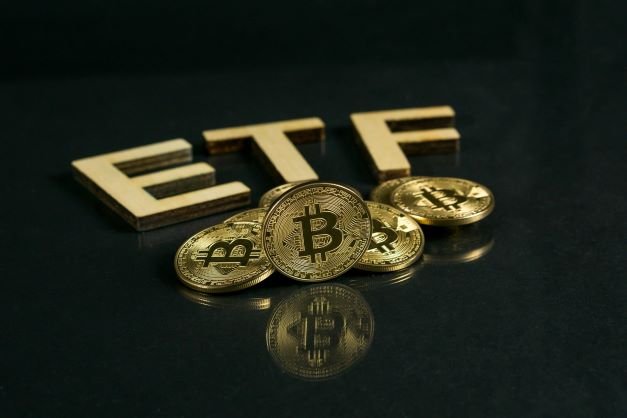Bitcoin-ETF
9 minutes
Beginner
The growth of well-known cryptocurrencies in recent years has been one of the main events for millions of crypto enthusiasts. After the ICO boom of 2017, the value of Bitcoin significantly improved, with possible values now three times higher than its previous market maximum. The exceptional increase in the value of Bitcoin has increased the likelihood of attention towards Bitcoin ETFs and their various consequences. Bitcoin has the reputation of being the first popular cryptocurrency and has become one of the best options for governments, retail investors, and companies worldwide.
On the other hand, Bitcoin is associated with various technical complexities such as the security of private keys. Therefore, investors are looking for efficient and secure alternatives to protect their Bitcoins. Exchange-traded funds or ETFs offer a convenient solution for maximizing the efficient use of Bitcoins without the need to own or store them.
What is an ETF?
Exchange-traded funds are not a new concept in the world of finance and have been used in financial markets for over two decades. In fact, ETFs have managed to gather almost $1 trillion in managed assets, and hundreds of ETFs are launched every year. What does an exchange-traded fund actually mean?
Essentially, it is a fund or security that you can use to track the price of related assets. You can have traditional assets such as oil and gold, along with other commodities within an ETF. ETF helps you establish custody of the tracked assets, along with issuing shares to confirm ownership of the related assets.
The behavior of ETFs is almost the same as traditional stocks when trading on regular stock exchanges. The exceptional growth in popularity of ETFs is explained by the assumed potential for buying and selling along with solid liquidity. Investors can improve access to underlying assets in ETFs rather than accessing assets directly. Most entries on the Bitcoin ETF list can help you enjoy such convenience in trading bitcoins. In fact, the support for Bitcoin ETFs laid the foundation for the introduction of crypto ETFs in the first place.
What is a bitcoin-ETF?

A Bitcoin ETF is essentially a tradable instrument for tracking the price of Bitcoin. Interestingly, Bitcoin ETFs are usually listed on traditional exchanges, just like stocks. The process of creating a crypto ETF or Bitcoin ETF will be focused on the management company acquiring actual coins from the market. The actual cryptocurrency serves as a reserve, just like in the case of traditional ETFs.
Now the company must create a fund representing the value of the bitcoins it owns, and then list them on a stock exchange for trading. Investing in Bitcoin exchange-traded funds is a suitable choice for average investors.
This is not related to any security or logistics risks associated with managing cryptocurrencies. Typically, the entire process of buying bitcoins or other cryptocurrencies through an exchange can be quite confusing. In such cases, investors also face problems storing their cryptocurrencies. At the same time, it is also important to consider the potential risks for the average investor without any technical knowledge.
How does a bitcoin-ETF work?

A simple definition of a Bitcoin ETF shows the ability to have custody over bitcoins without any storage issues.
However, many people immediately jump to questions such as "Which Bitcoin ETF is the best?" On the other hand, it is important to take a step back and dive deeper into how ETFs work. You should have a clear understanding of the different methods of creating and managing ETFs before investing your money. Here is an overview of how Bitcoin ETFs work in a few simple steps.
- Creating ETFs
The process of creating a bitcoin ETF begins with a reliable custodian, such as a cryptocurrency exchange or asset management company. The custodian starts the process by collecting funds from investors and then purchases shares that are tied to the underlying crypto asset. Parties involved in purchasing the underlying crypto assets to study various ETF advantages are called authorized participants. In the case of a bitcoin ETF, the custodian purchases positions in bitcoin and futures contracts using the investors' funds. - Asset allocation
The second step in the process of a crypto ETF involves the distribution of assets to the ETF providers. Authorized participants work on distributing the assets in exchange for shares in the ETF provider's funds. The value of the shares is directly proportional to the value of the assets received by the ETF providers. As a result, investors would easily become shareholders of the fund without claiming actual ownership of the underlying asset. - Regulatory approvals
The next step in creating a crypto ETF involves a significant hurdle requiring regulatory approval. ETFs must be approved by the regulatory body responsible for securities markets. For example, regulators in the US and Europe have avoided any attempts to approve ETFs. Regulators have cited price manipulation restrictions along with the safety of the underlying crypto assets as obstacles to approving ETFs. The history of failed attempts by cryptocurrency exchange-traded funds dates back to 2013 when the Winklevoss brothers lost their bid to gain approval for their Bitcoin Trust. - Listing on exchanges
The final stage of Bitcoin exchange-traded funds (ETFs) involves listing on exchanges. After an ETF is listed, it can be bought or sold. Additionally, decisions to buy or sell ETFs can result in losses or gains for investors. It is also important to be aware of management fees associated with ETFs. The amortization of net asset value or ETF can help cover the management fee. Why? ETFs are more or less like tradable stocks and can fluctuate in price during the trading day.
Types of bitcoin-ETFs

The Bitcoin ETF category is an important point in discussions about cryptocurrency exchange-traded funds. You can find two separate categories in the list of Bitcoin ETFs, such as Bitcoin futures ETFs and Bitcoin spot ETFs.
A futures-based ETF refers to a fund representing the value of a cryptocurrency that you can buy or sell according to contract terms. On the other hand, you will not own the underlying cryptocurrency during the purchase or sale of futures. All you have is a contract that guarantees the purchase or sale of cryptocurrency at any point in the future. Therefore, futures ETFs may easily cope with price fluctuations and market instability. However, they do not offer opportunities for betting or using coins in voting, as if you were a direct owner of the cryptocurrency. The discussion on "Which Bitcoin ETF is Better?" will draw attention to Bitcoin spot ETFs.
Spot ETFs are essentially one-time purchases of digital assets where buyers and sellers directly own the cryptocurrency. The functioning of spot ETFs is similar to transactions on all modern crypto exchanges. The bulk of criticism has been directed towards the design of Bitcoin futures ETFs as it takes into account Bitcoin futures. As a result, it may have more risks of inefficiency compared to spot Bitcoin ETFs. Additionally, future Bitcoin ETFs may also imply higher prices compared to the underlying asset. Furthermore, the difference between Bitcoin ETFs suggests that they are backed by derivatives. In contrast, spot ETFs do not have such risks.
Advantages of Bitcoin ETFs
The promise of increased adoption of Bitcoin may become evident thanks to the definition and operation of Bitcoin ETF. However, it is also important to know how institutions and retail investors can use ETF as an opportunity to access Bitcoin as an asset. Many ETF enthusiasts believe that Bitcoin ETF offers an investment model with trustworthy value advantages. Here is a brief description of the various advantages associated with Bitcoin ETF.
- Bitcoin ETFs serve as a favorite tool for raising awareness about blockchain technology. They can help in providing and validating cryptocurrencies and bitcoins on financial markets around the world.
- ETFs trade on exchanges just like stocks, which gives them a chance to gain popularity among both retail and institutional investors. Bitcoin ETFs have become a popular type of security with stable liquidity.
- Average crypto investors can easily bypass the complexities of exchanging and trading cryptocurrencies without centralized intervention.
- ETFs can also offer flexible options for short-term, long-term, or medium-term investments.
- Support for a better definition in the rules for Bitcoin exchange-traded funds could pave the way for tax breaks, restrictions on volatile trading, and limits on market manipulation.
- Bitcoin ETF can provide advantages for institutional investors with pension funds and mutual funds, as well as support portfolio diversification.
Disadvantages of bitcoin-ETF
Restrictions on the listing of bitcoin ETFs will bring the discussion to a more practical perspective. How can you assume that ETFs are a reliable choice for investing in cryptocurrency without considering their failures? Notable issues related to bitcoin ETFs include the following:
- Management fees associated with ETFs are a significant hurdle for investors, as a significant number of shares can constitute a large amount of management fees.
- Bitcoin ETFs do not offer actual ownership of the crypto asset, as this helps track the asset's price. At the same time, there are obvious limitations to trading cryptocurrency through an ETF, as it cannot be considered an investment fund.
Concluding words
The dominance of ETFs is gradually growing as they become more widespread in the world of cryptocurrency. One prominent example of a bitcoin ETF is the ProShares Bitcoin Strategy ETF. Additionally, the US Securities and Exchange Commission has imposed numerous bans on various ETF proposals.
It is important to look for successful examples of cryptocurrency ETFs in order to determine the future of cryptocurrency ETFs. Understanding the basic definition of a Bitcoin ETF and how ETFs work sheds light on possible future prospects for cryptocurrency adoption.



